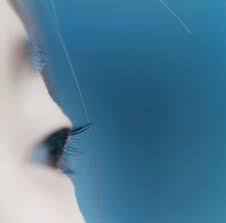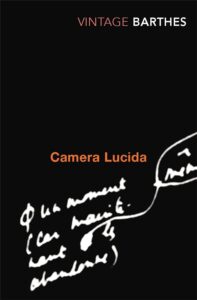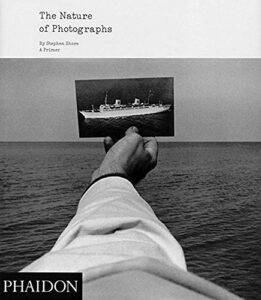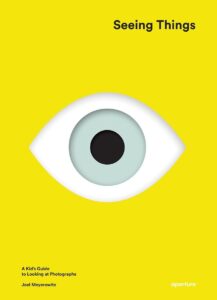“AWhat catches our attention reflects how the world speaks to each of us personally”.
Joel Meyerowitz
I have two passions in life: my profession as a psychologist and photography, which is understood as the intimate process of constructing an image.
I am curious about certain questions that arise whenever I visit an exhibition or meet artists.
Why do we photograph this and not something else?
Why do we look at what we look at?
Can photography capture what worries me unconsciously?
Photography reaches where words cannot. However, people persist in naming almost everything. We have a fondness for classifications, and we advocate naming the seemingly unnameable with words because it helps us understand what we see.
Therefore, in my quest for answers to these questions, I contemplated categorizing four types of gazes that, at some point, might indicate where we direct our attention—a starting point for initiating a process of self-discovery and a personal photographic project rooted in one’s authenticity.
Ideas never come alone; it was a time when I had just read great books:
Camera Lucida: Reflections on Photographyes y Lección de fotografía.
The Nature of Photographs: A Primer by Shore, Stephentephen Shore.
Seeing Things: A Kid’s Guide to Looking at Photographs
This classification originated from my professional development and defects, and it was influenced by my training and readings. I’ve shared it at photography congresses and schools and consistently incorporate it into courses and workshops.
Identifying your type of gaze is a starting point for initiating more authentic and conscious processes of creation and expression.
We could talk about the idea that there are numerous types of gazes, as many as there are people on earth because our gaze is personal and non-transferable; it is our unique imprint.
All human beings are like containers of personal characteristics, history, geography, and value judgments. The circumstances around us are different. We make our own decisions. We have our own tastes. We are complex, unique, and unrepeatable beings. Drawing from these differences, each individual directs their gaze toward what captivates and interests them. No school can instruct you on what should capture your interest or where your gaze should be directed.
Based on this, I suggest exploring the different types of gazes through a simple classification that may resonate with your current perspective in the present moment.
We will define four gaze types: contemplative, expressionist, documentary, and conceptual.
CONTEMPLATIVE GAZE
Surely, you have experienced a state of catatonia while gazing at a fly or a speck of dust floating in the air before. A relaxed state of alertness characterized by looking without judgment and paying attention without pretense. It is about appreciating the beauty in simplicity and the everyday things surrounding us.
“While taking pictures, my mind is essentially free from other thoughts. In my experience, the best photos emerge when my mind is empty of thoughts, and I am completely focused and attentive. I feel entirely absorbed, detached from my own being during these moments”.
 Rinko Kawauchi
Rinko Kawauchi
This type of photography captures the essence of air, water, and nature, closed eyes, a wrinkled blanket, and a wandering ant. The contemplative gaze is a form of meditation, drawing you closer to your inner self and surroundings. Take a deep breath before creating an image.
EXPRESSIONIST GAZE
Expressionism seeks to arouse emotions. The expressionist gaze is born from within. Illness, helplessness, motherhood, loneliness, or human problems are the preferred topics for this type of gaze.
It is a gaze born from the artist’s feelings and reality, a narrative that, in itself, heals. Photography has the power to transform. And this is precisely what the expressionist gaze achieves: it transforms pain and intense emotions into art.
“We don’t see things as they are; we see them as we are.”
Anais Nin
Dorothy Shoes is a French artist diagnosed with Multiple Sclerosis. With her photographic work, she aims to demonstrate the impact that disease has on her life. “I had two options left: flooding my pillow with tears or fighting with my own weapons. I soon realized my luck. As an artist, I possess the most efficient of weapons: the power to transform. The idea was to transform an intimidating and terrible verdict into creative material.”

Dorothy Shoes
She asked 33 women from her private circle—friends, colleagues, students—for their help in creating a sort of “distanced self-portrait,” capturing her situation with the disease and the fears it evoked in her. All accepted.
This collection portrays the various symptoms of the pathology, serving as a “distanced self-portrait” of both the author and the disease.
DOCUMENTARY GAZE
It’s our outward gaze. Documentary photography informs about the realities of humanity. It documents daily, warlike, social, or cultural events that impact the living conditions of the beings inhabiting this planet. Its emblem is photo-reportage, the document that narrates the story of a reality. It is a committed gaze aiming to bring visibility to provoke change. For this gaze, the camera can be an instrument that shields from harsh reality, allowing exploration of situations that evoke concern and a desire to showcase and denounce. It can also capture stories of daily life that the world wants to tell.

Susan Meiselas
Susan Meiselas undertook her Carnival Strippers project in New England from 1972 to 1975 while teaching photography in New York public schools. She spent her summers photographing and interviewing women who performed striptease at small-town carnivals. She portrayed the dancers on and off stage, photographing their public performances and private lives. Susan Meiselas’ documentation of these women’s lives revealed a concealed world during the early years of the feminist movement, reflecting the struggle for identity.
CONCEPTUAL GAZE
It is the rational gaze. Purely intellectual. This type of photography aims to represent an idea through an image. That is why using objects as metaphors or symbols becomes of great importance.
“When an artist uses a conceptual form of art, it means that all the planning and deciding is done before starting the work, and the execution part is only a superficial matter.”
Sol Lewitt
In the conceptual gaze, ideas are in charge. The artist poses a question and answers it with images.
Duane Michals talks about the human condition with his series of photographic narratives linked to create a story.

Duane Michals
You are already familiar with the categorization of four distinct types of gazes.
Gazes are not simple; they mix and change. Sometimes, one takes precedence, and then the other, but they help define the moment you are in now. Which do you vibrate with? Which is easier for you? Which is more complex for you?
Your gaze depends on your way of being and feeling, on the recurring thoughts of the moment you live in, your beliefs, the historical moment, the family to which you belong, and your visual culture.
Photography can serve as a tool to understand where you are and what concerns or obsesses you. You just have to pay attention to what you look at.
Thank you for being here.
You can learn more about gaze types in:





